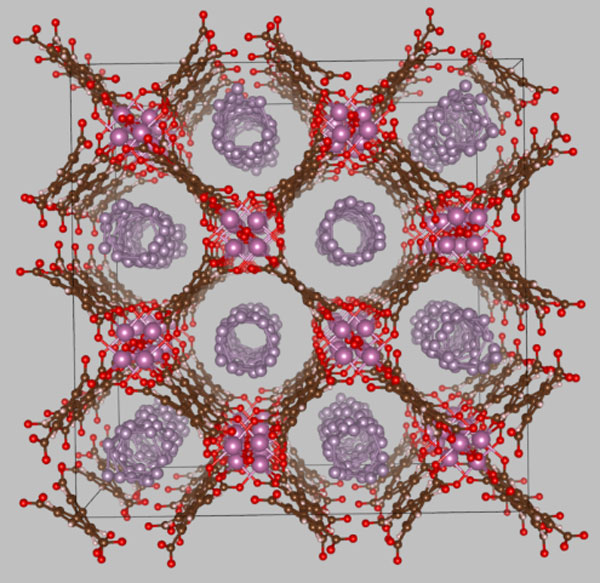Red phosphorus was discovered in the 19th century and it continues to attract much attention as a cheap naturally-abundant semiconductor for various applications in the emerging green technologies. Red phosphorus demonstrates good photo-catalytic activity and has great potential as an anode material in batteries. Yet there remains much ambiguity regarding the precise structure of red phosphorus.
An international team of scientists led by Prof Martin Schröder and Dr Sergey A. Sapchenko from the University of Manchester report the adsorption and photo-polymerisation of P4 molecules encapsulated in an indium(III)-based metal-organic framework, to afford a double-helical chain composite comprising of [P8] units. The research, published in the journal Nature Communications, reveals direct crystallographic evidence for the structural building blocks of the red phosphorus, stabilized within the pores of a metal-organic host. Using the state-of-the-art spectroscopy the observed double helix is shown not to be due to structural disorder of simpler subunits. To explain these unusual structural features, first-principles calculations were performed on the MASAMUNE supercomputer at the Center for Computational Materials Science (CCMS) with Associate Prof Rodion Belosludov from Institute for Materials Research, Tohoku University. These studies confirmed that single chains of butterfly P4 fragments, which were thought to be the main components of red phosphorus, actually collapse in the environment of the 3D channels of the host framework to give thermodynamically stable [P8]n within a double helix structure.
These data clearly demonstrate applicability of the obtained material for visible light-induced water treatment and its potential for use in artificial photo-synthesis processes. Our methodology to stabilise otherwise unstable species within a porous host can be, in principle, extended to MOF-assisted photo-polymerisation of other small molecules, which will be a powerful way to modify and control the electronic structure and photo-catalytic performance of the resulting encapsulated and protected adducts, aggregates and polymers.

Packing of the double helix (P8)n within the channels of MFM-300(In)
Publication Details
Title
Authors
Journal
DOI
Online publication date
February 12, 2025
